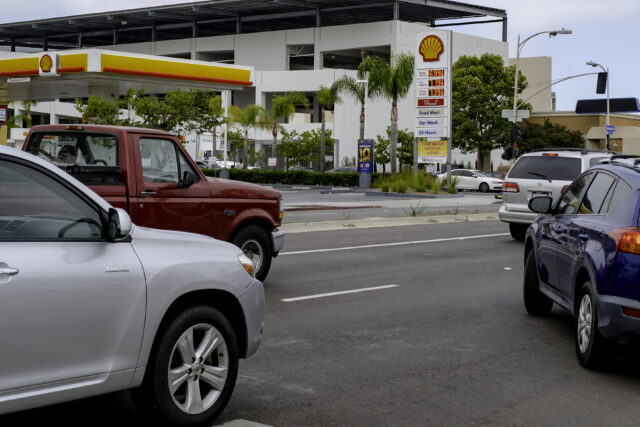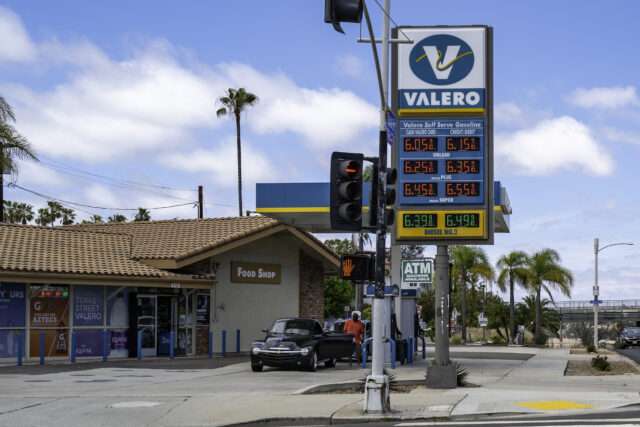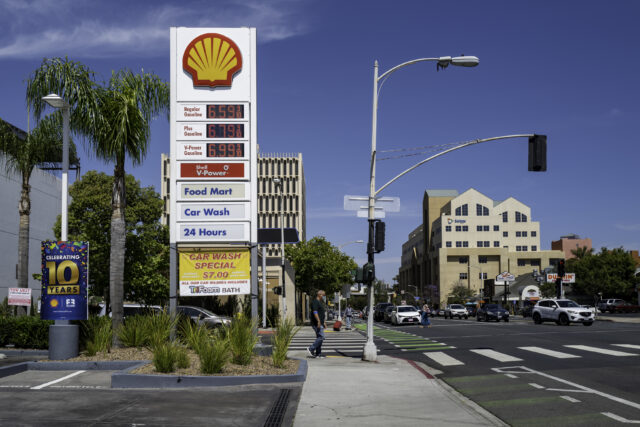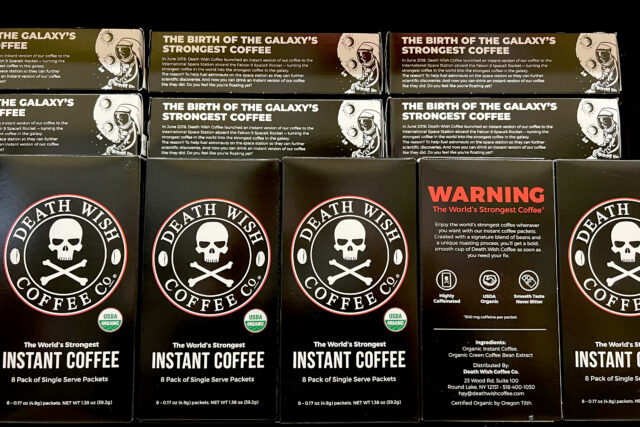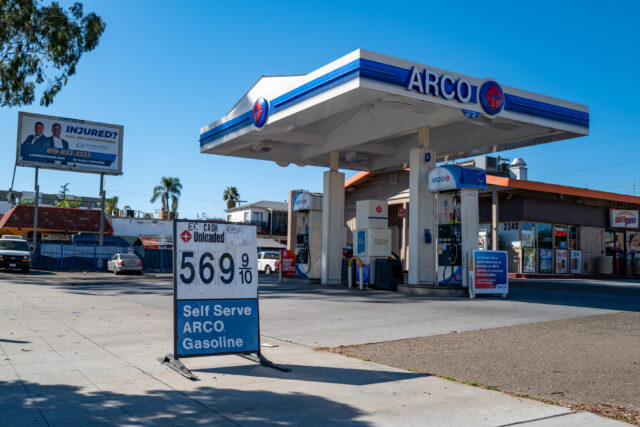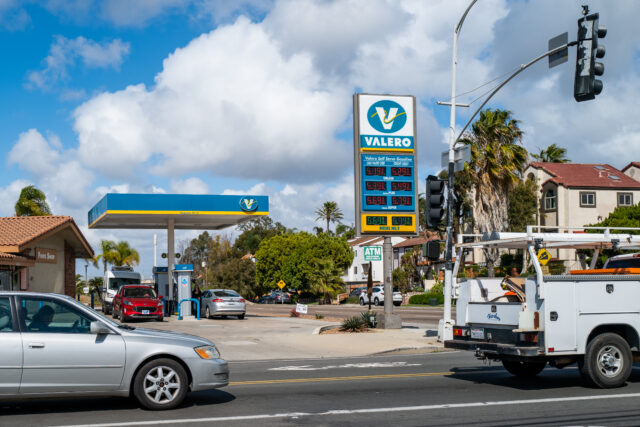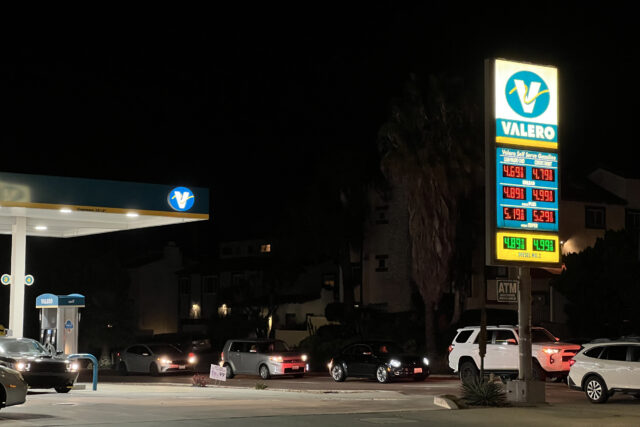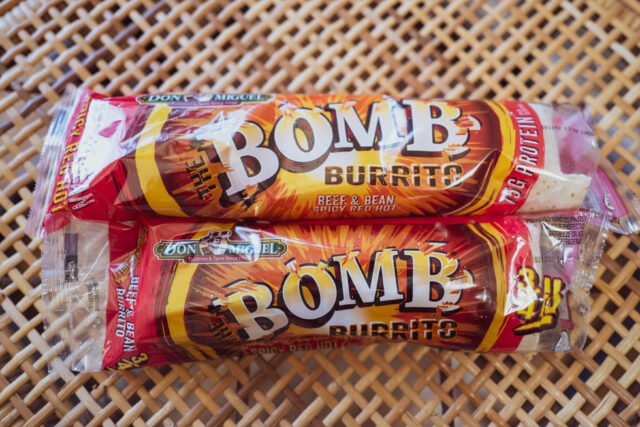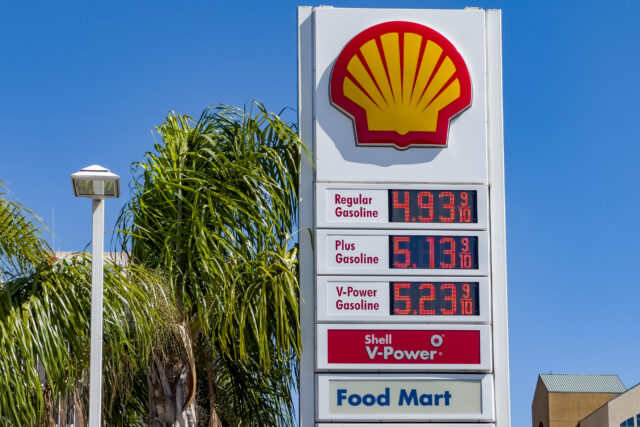At one of the pricer area filling stations, located where Fourth and Washington meet in San Diego’s Hillcrest neighborhood, the price of gasoline approaches mountaineering heights. Grab your gear and head for the summit of cash required to fill the tank. For context, rounding to the nearest buck, customers paid $6.60 per gallon on May 27, 2022 and $4.94 on Oct. 15, 2021 at this location.
On the same day as the Featured Image, June 8, 2022, at my University Heights-located Valero, I filled up a half-tank for 30 bucks at $6.09 a gallon around Noon. Lady driving an Acura in the queue before my car paid $69 and some change. When I drove past a few hours later, posted price had jumped to $6.16.
